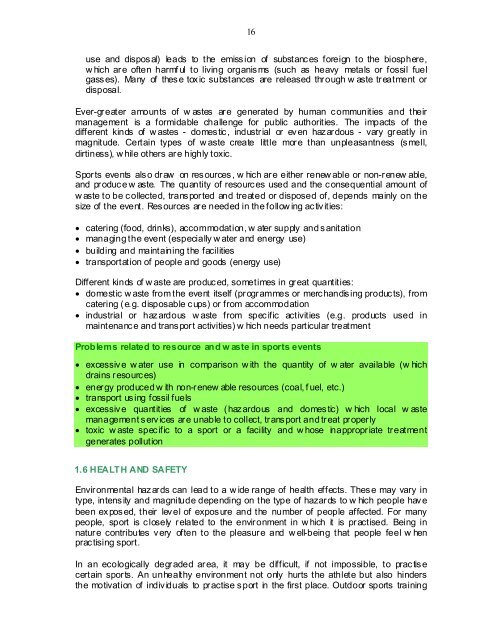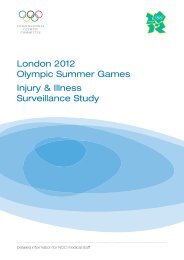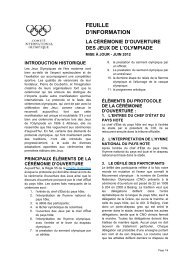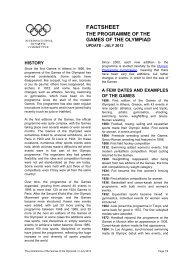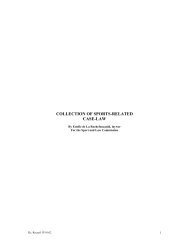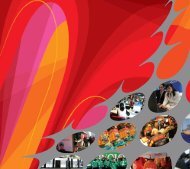MANUAL SPORT ENVIRONMENT
MANUAL SPORT ENVIRONMENT
MANUAL SPORT ENVIRONMENT
You also want an ePaper? Increase the reach of your titles
YUMPU automatically turns print PDFs into web optimized ePapers that Google loves.
16<br />
use and dispos al) leads to the emiss ion of substanc es foreign to the biosphere,<br />
w hich are often harmf ul to living organis ms (such as heavy metals or fossil fuel<br />
gass es). Many of thes e tox ic substances are released through w aste treatment or<br />
disposal.<br />
Ever-greater amounts of w astes are generated by human c ommunities and their<br />
management is a formidable challenge for public authorities. The impacts of the<br />
different kinds of w astes - domes tic , industrial or ev en haz ardous - vary greatly in<br />
magnitude. Certain types of w aste create little more than unpleasantness (s mell,<br />
dirtiness), w hile others are highly toxic.<br />
Sports events als o draw on res ources , w hich are either renew able or non-renew able,<br />
and produc e w aste. The quantity of resourc es used and the c onsequential amount of<br />
w aste to be c ollected, trans ported and treated or disposed of, depends mainly on the<br />
size of the event. Res ources are needed in the follow ing ac tiv ities:<br />
• catering (food, drinks), accommodation, w ater supply and s anitation<br />
• managing the event (especially w ater and energy use)<br />
• building and maintaining the facilities<br />
• transportation of people and goods (energy use)<br />
Different kinds of w aste are produc ed, sometimes in great quantities:<br />
• domestic w aste from the event itself (programmes or merc handis ing produc ts), from<br />
catering (e.g. disposable c ups) or from accommodation<br />
• industrial or haz ardous w aste from spec ific activities (e.g. products used in<br />
maintenanc e and trans port activities) w hich needs particular treatment<br />
Problems related to resource and w aste in sports events<br />
• excessiv e w ater use in comparison w ith the quantity of w ater available (w hich<br />
drains resourc es)<br />
• energy produced w ith non-renew able resources (coal, f uel, etc.)<br />
• transport using fossil fuels<br />
• excessiv e quantities of w aste (haz ardous and domes tic) w hich local w aste<br />
management s erv ices are unable to collect, trans port and treat properly<br />
• toxic w aste spec ific to a sport or a facility and w hose inappropriate treatment<br />
generates pollution<br />
1.6 HEALTH AND SAFETY<br />
Environmental haz ards can lead to a w ide range of health effects. Thes e may vary in<br />
type, intens ity and magnitude depending on the type of hazards to w hich people hav e<br />
been ex pos ed, their lev el of expos ure and the number of people affected. For many<br />
people, sport is c losely related to the environment in w hich it is practised. Being in<br />
nature contributes v ery often to the pleasure and w ell-being that people feel w hen<br />
prac tising sport.<br />
In an ecologically degraded area, it may be difficult, if not impossible, to prac tis e<br />
certain sports. An unhealthy environment not only hurts the athlete but also hinders<br />
the motivation of individuals to practise sport in the first place. Outdoor sports training


